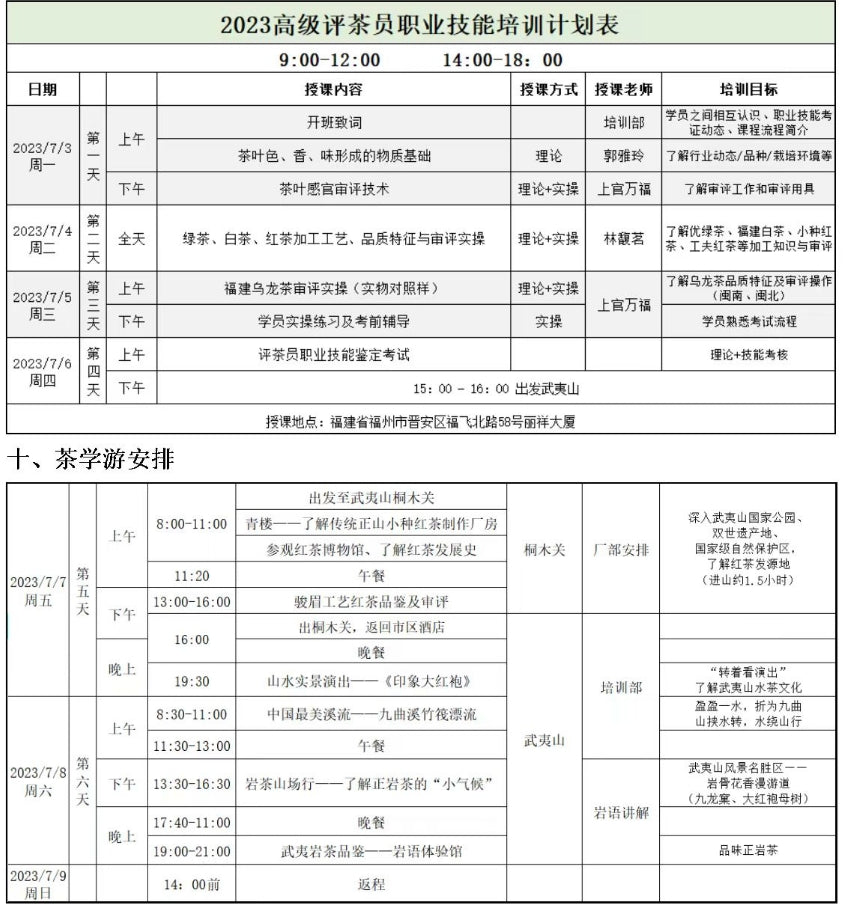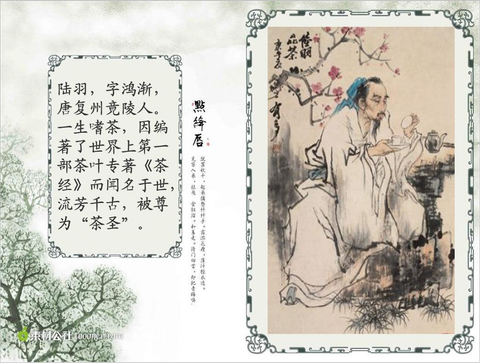
The history of Lapsang Souchong
1. The origin of Lapsang Souchong black tea
As the ancestor of black tea in the world, Lapsang Souchong has a history of more than 400 years since its birth. According to historical records, Tung trees were called Renyi仁义 Township in Chong'an崇安 County in the Song Dynasty. The workers here mainly relied on tung oil and the production of green tea-like "Long Tuan Feng Cake"龙团凤饼 tribute tea. Due to the prosperity of tung oil production, a large number of tung oil trees were planted in the local area. Influenced by the development of tung oil, this area was named Tongmu桐木. It is also the gateway to and from the Central Plains, so it is called Tongmuguan. The Jiang family of Zhengshantang has lived here for generations.
In the middle and late Ming Dynasty, the situation was turbulent. One day around 1568 AD, during the tea-picking season, a group of officers and soldiers passed by Tongmu. In order to avoid the disturbance, Jiang Gong江氏祖先, the ancestor of Zhengshantang, did not have time to make tea from the tea leaves picked that day. The officers and soldiers slept on the tea leaves. After the officers and soldiers left, the tea leaves that were originally made into green tea had turned red. Jiang Gong kneaded the fermented tea leaves repeatedly and baked them with masson pine, which is rich in paulownia wood. Masson pine produces rich pine smoke during the burning process. After the tea absorbs the pine smoke, the color becomes dark and oily, exuding a unique rosin aroma. The next year, someone actually ordered this tea at several times the price of green tea. Lapsang Souchong black tea was born in this wonderful way.
At the end of the 16th century and the beginning of the 17th century (about 1604), Lapsang Souchong was spread overseas and brought to Europe by Dutch merchants. At first, it was sold in pharmacies for its therapeutic functions. At this time, no other black tea in the world had been born. Lapsang souchong entered the UK and was sold to the public in a cafe called Garvey in London. The price was as high as 6 to 10 pounds. The sales poster said: The texture is mild and suitable for all seasons. The drink is hygienic and healthy and has the effect of prolonging life. The effect. But then black tea became popular among the British royal family and even the whole of Europe, setting off the "afternoon tea" trend that has been passed down to this day.
William Ux's "Encyclopedia of Tea" records: In 1607, the Dutch East India Company first purchased Wuyi black tea (Lapsang Souchong) from Macau in Lingnan, China, and re-exported it to Europe via Java. At that time, the European tea market was dominated by Japanese green tea. Lapsang Souchong had a mellow flavor and quickly occupied the European tea market. Black tea quickly became popular in the British Isles. This is the earliest record of tea export to China.

In 1662, when the Portuguese princess Catherine married King Charles II, she brought several boxes of Chinese "Lapsang Souchong" black tea as a dowry. Later, Queen Anne advocated replacing wine with tea. As a treasure at the time, Lapsang Souchong black tea was introduced into the upper class and gradually evolved into "afternoon tea".
"New Chronicles of Chong'an County" records: "English people say that the red color of Wuyi tea is Mashan, and the quality is far better than Ceylon and India. Anyone who treats guests with Wuyi tea will stand up and pay tribute." This shows that Lapsang Souchong. Black tea was highly favored by the upper class society at that time. The British affectionately call tea "vanilla", and everyone from nobles to common people love black tea. Since then, Lapsang Souchong black tea has become a symbol of Chinese black tea in European history and a famous tea drunk in the world.
In 1876, Keemun black tea was successfully trial-produced on the basis of Lapsang Souchong black tea. Subsequently, Gongfu black tea from various parts of China also followed the Lapsang Souchong process, and gradually developed Dianhong, Minnan black tea and other Gongfu black teas from various places.
2. Why is it called Lapsang Souchong black tea?
The word "Lapsang Souchong" black tea was first called BOHEA in Europe. Legend has it that it is the Minnan pronunciation of the place name of Wuyi. In Europe (the United Kingdom) it is the symbol of Chinese tea. Later, due to the prosperity of trade, the locals artificially distinguished it from other fake small Growing black tea (artificial souchong or tobacco souchong) disrupted the market, so it was named "Lapsang souchong".
The so-called "Zhengshan" means something produced in a real high mountain area. Its coverage area is centered on Miaowan庙湾 and Jiangdun江墩 Natural Village of Tongmu Village in Wuyishan, extending to Shilong石垅 in Qianshan
铅山, Jiangxi in the north, Baiyeping百叶坪in Caodun曹墩in Wuyishan in the south, Da'an大安 Village in Wuyishan in the east, Guangze光泽 Siqiangankeng司前干坑 in the west, and ShaowulongLake邵武龙湖in the southwest. Guanyin Keng观音坑 has a radius of 565 square kilometers. Most of them are now in the Wuyishan National Nature Reserve in Fujian. The soil is fertile and the tea produced is of unparalleled quality.

"Souchong" refers to the variety of tea tree. Lu Tingcan陆廷灿mentioned in "Suijianlu" in "Xu Tea Classic": "Wuyi tea, those on the mountains are rock tea, those by the water are continent tea,...the best one is called Gongfu tea. If there are small species after a long period of time, they will be named after the trees. No more than two of each plant will be obtained, so no more can be obtained."
3. Production of Lapsang Souchong
In Tongmuguan in Wuyi Mountain, there are two wooden buildings called "Qinglou"青楼, which are factories specially used to make Lapsang Souchong black tea.
In the past, the production of lapsang souchong required one bud and three or four leaves as raw materials. This was not done on rainy days, dewy leaves, hot sun, or rain the day before. The tea trees in Tongmu Mountain are wild and mixed, and even the most skilled tea pickers can only pick up 10 kilograms of tea greens in a day.
The picked fresh leaves are spread out on wooden boards or bamboo strips in a sparse manner, and the weather, temperature, humidity, and wind are used to distribute the moisture in the leaves, making the tea green soft and able to be rolled into strips. The masson pine wood is burned to control the temperature during withering. Every 30 minutes, the tea greens are gathered together again and spread out to dry again, so that each tea green can be spread evenly.
When 100 pounds of fresh leaves remove 40 pounds of water, it is the best time to knead. Twisting is not only to shape the beautiful shape of the tea leaves, but also to destroy cells and accelerate oxidation.
Fermentation is the most critical process for forming the quality characteristics of black tea's color, aroma and taste. Cover the bamboo tea basket with a damp cloth and wait for seven hours. The tea leaves will change from green to bronze, and the aroma will become more leisurely.
Passing the red pot is a unique process of Lapsang Souchong. The high temperature of 180 degrees prevents the tea leaves from continuing to ferment, and also enhances the aroma and sweetness of the tea leaves.
Immediately afterwards, the tea greens are spread on the bamboo strips, and the masson pine is slowly burned in the underground fire stove. The pine smoke is transmitted to the drying room along the cracks of the bricks. The tea leaves are wrapped in the bamboo strips and are wrapped in the rosin released by the burning of the old pine wood. surround. The temperature evaporates the excess water in the tea leaves and infuses the Lapsang Souchong with the final smoky aroma. This Lapsang Souchong black tea, made with masson pine smoke, has a strong pine incense and the unforgettable sweetness of longan.
After more than ten hours, the traditional Lapsang Souchong black tea produced in Tongmuguan was made. Under the boiling water, the aroma of pine smoke mixed with longan and a fruity aroma lingers on the tip of the nose. The slowly smoked rosin lasts for a long time and remains full of flavor after brewing many times.

4. What is the difference between Lapsang Souchong and Waishan Souchong?
The national standard GB/T13738 for Lapsang Souchong black tea points out: Lapsang Souchong must use tea tree raw materials centered on Miaowan and Jiangdun Natural Village of Tongmu Village in Wuyishan National Nature Reserve within a radius of 565 square kilometers. This black tea is made by traditional craftsmanship and has the aroma of pine smoke and dried longan.
The difference between Lapsang Souchong and Waishan Souchong is:
1. Definition of geographical scope: The origin of Lapsang Souchong black tea is in Tongmuguan, Wuyishan. According to the "Chinese Tea Classic", "The place inside the Paulownia tree is Lapsang Mountain." All tea produced in Tongmuguan is called Lapsang Mountain. The tea produced near Wuyi Mountain or other areas is called Waishan to distinguish it from the souchong black tea produced outside Tongmuguan.
2. Production process requirements: Lapsang Souchong is the ancestor of black tea, and it is also the most classic and traditional tea species. The real Lapsang Souchong black tea needs to be made from tea leaves from high mountain tea trees in the Wuyi Mountain area, using traditional techniques and passing through masson pine. Made by natural smoke baking process.
3. Difference in quality: Lapsang Souchong is a high-mountain tea with a special alpine charm, mellow taste, and is resistant to brewing and storage. Waishan Souchong is mostly low-mountain tea, which has a thin background and is not resistant to brewing.
Due to scarcity of raw materials or imperfect technology, most of the Lapsang Souchong currently on the market are not produced locally in Wuyi Mountain, and are made using Kungfu black tea technology, which does not have the aroma of pine smoke. It is a product with no production date, no quality certificate, no production standards, no manufacturer, and unknown origin. Some even add sugar to the surface to add sweetness.
The above is the sharing about Lapsang Souchong black tea. It mainly gives you a brief introduction from the origin, production process, naming and distinction of Lapsang Souchong. I hope you can gain something from this sharing.
It is “Bense”本色, made by Zhengshantang using traditional techniques and smoked with masson pine wood. It has a strong aroma of pine smoke and dried longan, which preserves the integrity of the tea leaves and is more suitable for the taste of modern people.




















































